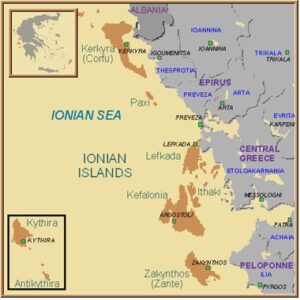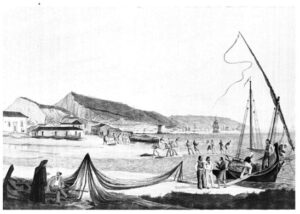John Pollock (1789-1842)
by Morag T Fyfe
An earlier version was published in Grave Matters 4, Summer 2018
Few of the families of the private soldiers and NCOs who retired from the army in the first half of the nineteenth century as out-pensioners of Chelsea Hospital and settled in Glasgow could afford to purchase a family grave in the Necropolis; most finished up in common ground.
One exception is John Pollock who was buried in the Necropolis on 17th October 1842 in compartment Eta lair 16. He was described in the burial register as ‘agent and house factor late of 90th Regt’.
His service record survives and shows he joined the 90th Regiment at Glasgow in 1807 at the age of 18 (born 1789 in Glasgow) and was discharged from Haslar Barracks, Gosport in 1831 with the rank of colour sergeant aged 42. During the course of his service he spent six years in the West Indies, one year in North America [Canada], six months in France and three years in the Mediterranean.
When Pollock enlisted in 1807 the 90th was already in the West Indies stationed on Saint Vincent and Pollock arrived there on 9th July 1808. The following year the regiment participated in the capture of Martinique before returning to St Vincent and in 1810 his service record is specifically endorsed that he was present at the surrender of Guadeloupe by the French. Between 1812 and 1815 the UK and the USA were at war and, as a result, the regiment moved to Canada in 1814 and spent twelve months at Montreal and other stations. On returning to England in August 1815 it was posted direct to Ostend to join the Army of Occupation in France. After the regiment returned to England it spent four years stationed in various towns in England seldom staying anywhere for more than six months.
At the end of 1820 the 90th sailed for Malta at the start of a decade’s service in the Mediterranean but disturbances in the Ionian Islands in 1821 resulted in the 90th moving there and being split between Cefalonia and Zante.
Zante, or Zakynthos is one of the Ionian Islands which were under British control between 1815 and 1864. Pollock only spent three years on Zante before being transferred to a Depot [in the UK] at the end of 1825. Although he remained in the army until 1831 his active career seems to have been over and he was discharged to pension in 1831 as ‘his constitution is so exhausted that he is totally unfit for the service’. His ill health stemmed from a ‘protracted attack of remittent fever at Zante in 1824’. Remittent fever is a symptom, not a disease in itself, so it is impossible to know for certain what Pollock contracted but malaria or typhoid fever may be likely.
In the Victorian army soldiers could not marry (officially) without the permission of their commanding officer. Only those wives whose marriages were officially sanctioned could live in barracks with their husbands and accompany them abroad. John’s promotion within the regiment had been fast as he reached the rank of sergeant in 1812 five years after he enlisted; the fact that disease was rife in the West Indies could certainly have some bearing on the speed of his promotion. By the time he married in 1821 he had held the senior rank of Colour Sergeant for three years and one assumes he married with permission. The regiment sailed for Malta at the end of 1820 but Pollock was still in the UK at an unnamed Depot (in charge of a recruiting party?) and was able to marry Margaret Wright in Glasgow in July 1821. There was probably a degree of urgency in this as Margaret was three months pregnant at the time and John must have been expecting to leave for Malta at any moment. Their first child, Elizabeth Hastings was born in Glasgow in January 1822 but died on the Isle of Wight and was buried in Carisbrooke there on 19th August 1822. It is tempting to think that at the time Margaret was on her way to Zante as she gave birth to her first son, John, there in 1824. After Pollock’s attack of remittent fever, also in 1824, the family returned to the UK and five further children were born in Glasgow between 1827 and 1840. John was still in the army until 1831 so it may be that his wife travelled home to Glasgow to give birth to her children. Of the seven children born to John and Margaret Pollock four are known to have survived to adulthood and married and it is presumed the other three died young.
There is no longer a gravestone on Eta 16 but the burial registers record the burial of Margaret Wright, relict of John Pollock in 1843; Janet Pollock, who turned out to be a grand daughter of John and Margaret in 1873; and Mary Pollock, a daughter-in-law in 1878.
Very grateful thanks go to Rob Stephens who digested and summarized John Pollock’s service records for me, supplied copies of various death certificates and other family details. He was inspired in this research by his wife Jane Pollock.












